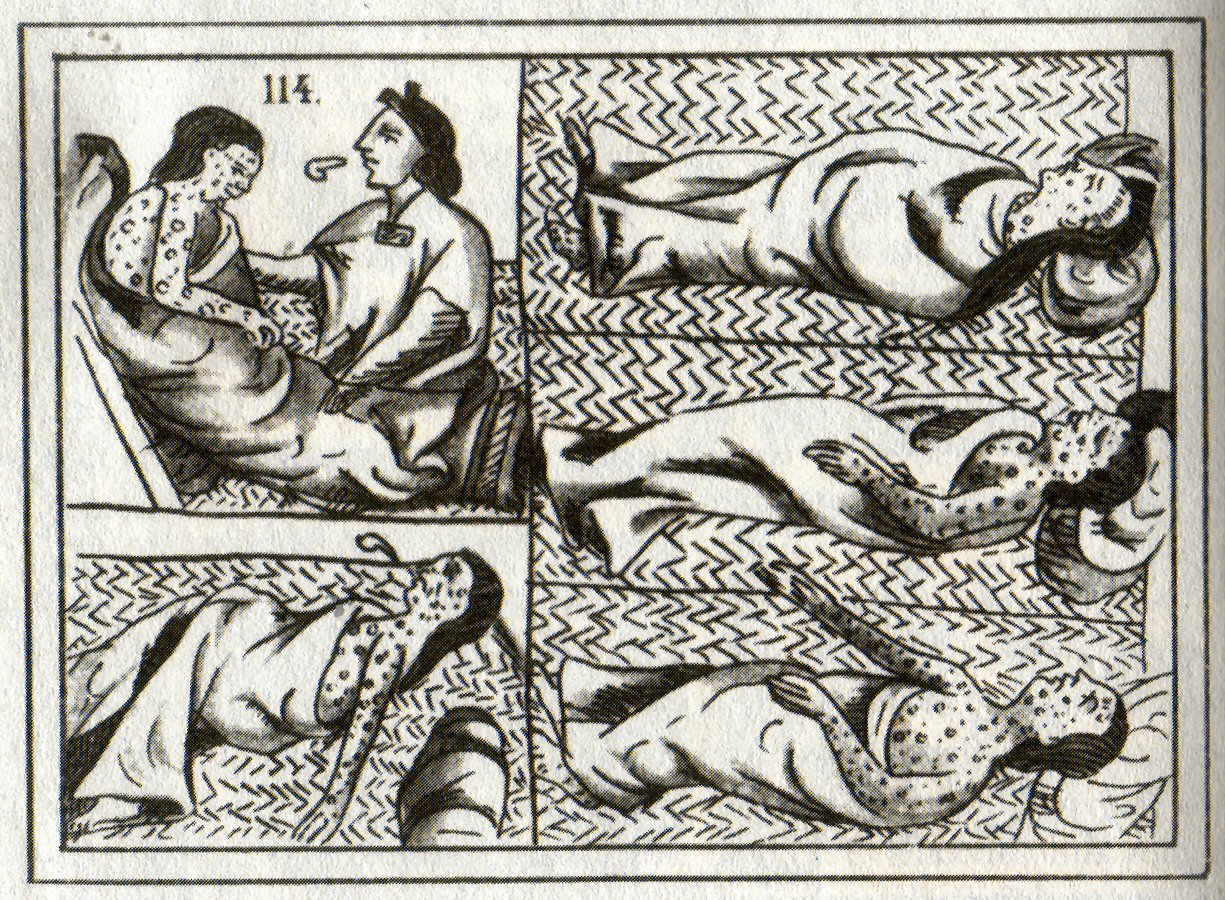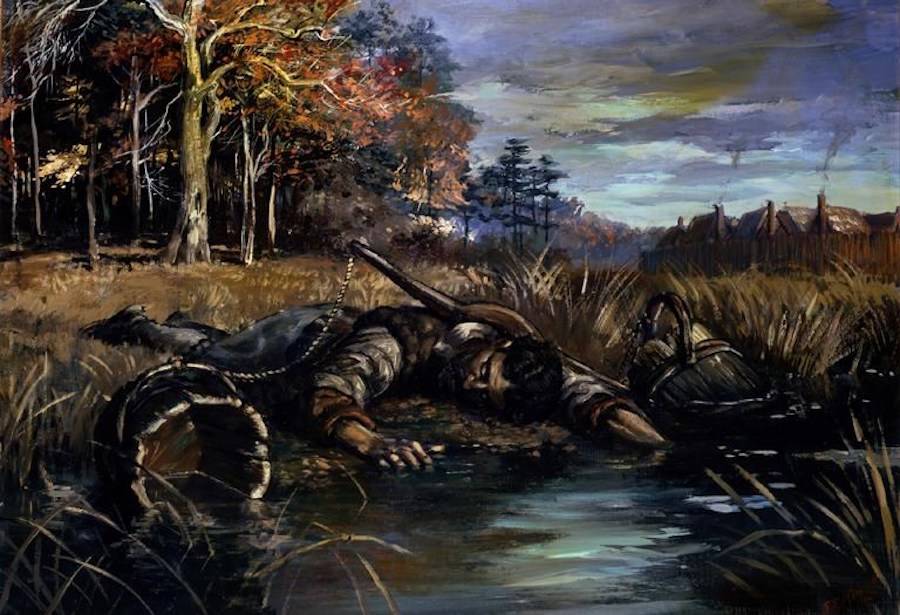What if the American apocalypse happened to both sides?
You might not have heard of the American apocalypse by that name. I'm talking about the vast outbreak of Old World diseases that came over with Columbus and so many ships thereafter. Smallpox, cholera, a mighty host of sickness that felled tens of millions.
It's likely the greatest outbreak of disease the world has ever known. Central America, home of the powerful Aztec Empire, is believed to have lost 90% of its population in the first century of contact.
To put that in perspective, imagine if everyone in the US died except for those born in another country. Or everyone in the US outside New York and Pennsylvania. Or everyone in the US under the age of 65.
The exact numbers get debated heavily, but the basic fact remains: the Americas are a post-apocalyptic world.
It's an apocalypse that's easy to miss. Most of the accounts we have of indigenous Americans are from the era after the apocalypse already happened. It was a vast, empty continent, ripe for the taking because most of the locals had died.
 |
| Aztec drawing of smallpox victims. |
None of this is a surprise these days. Maybe you've read Guns, Germs, and Steel or 1491 and you know all about the Great Dying. It was probably an inevitable plague. And with human nature as it is, the conquest of America and the near-extermination of a large part of mankind's culture may, sadly, have been inevitable too.
So I started to wonder what it would be like if the apocalypse struck both sides, indigenous and colonial alike. What if the European world came to an end at the same time? How would the survivors of both sides move forward? Who would rule this New World, with the ashes of the old worlds swept away?
 |
| Jamestown settler dead, Sydney King |
What would that European apocalypse even look like? Imagine if, somehow, Europe itself just went missing. News from the old country would cease, as would immigrants and supplies. Ships sent out to investigate would leave Virginia, never to return as they ran out of food somewhere in the ocean where Europe once was. The fledgling colonies might die out or be absorbed into the local populace, Roanoke writ large.
Signs in the Wilderness is about the frontier between civilizations, but also between the lost world of the past and the new world to be built. The apocalypse has already happened. One way or another, most people died, and their worlds died with them. Now the survivors have grown up, and their children have grown up, and they've begun to build something new.
It's a world that's still mostly empty, with ruins of the past but hope for the future.
 |
| William McAusland |
So how did the world end? I like to leave plenty of mystery around the days of the apocalypse. It's a dark time that the elderly survivors don't like to talk about. But it left scars not only among the people, but on the world itself. At some point, you'll need to know how it happened.
Pick two items from the table below. The first is what actually caused the end of the world. The second isn't the main event, but it may have happened as well or it might just be a widespread rumor.
| Apocalypse (d10) | signs | |
| 1-2 | meteorite impact | wave-scoured shores, tales of darkened skies and crop failures, meteor shower every year |
| 3-4 | pandemic | bones and abandoned villages, fearful isolated settlements, chance the plague may return |
| 5-6 | forbidden knowledge | scientific research into terrible things, backlash against science |
| 7 | divine retribution | new theology, theories about what distinguished those who were allowed to live |
| 8 | long winter | tales of starvation and years of ice, dead forests |
| 9 | hibernating creatures | physical remains, legends, theories about how many centuries the creatures sleep |
| 10 | years of drought | land scorched by fire, fallen trees, lost crops from the old days |
| apocalypse | |
| the real cause of the apocalypse | |
| but at least one rumor or sign points to | |
I like both the premise and the idea of having two explanations of the Apocalypse.
ReplyDeleteMay I suggest using something more open-ended than a table, though? I wrote a few days [1] ago about using the Tarot-style Space·Time Deck to create worlds, the same process can pretty much be used to destroy one :)
[1] https://space-timewilltell.yoric.xyz/post/plotonomicon-creating-worlds/
That's a pretty cool open-ended method. If anyone wants to delve more into the apocalypse itself, something like that tarot deck would be quite useful.
DeleteI like this idea. Also, if all contact with Europe were to stop, no one in America would know what happened. Did 90% of them die of plague? Did the continent literally vanish? Did a new Genghis Khan ride across the Anatolian Straits to conquer literally everything? Who can know? No one comes from Europe to tell us, no one who leaves to find out ever comes back.
ReplyDeleteYour setting would become a little like sci-fi stories where a human colony on some planet loses ALL contact with Earth and/or the larger human empire. One consequence of this would be that while the Native peoples surely remember the time before (as they do in the real world) for the European colonists, Europe might recede into myth, their arrival on the American shores becomes something like their "creation" from nothing. Some colonists surely remember (or at least believe in) Europe, but others probably have adopted a religious narrative that denies there was any time before, and treats their arrival here as the beginning of time.
Given enough time, history fades into stories of Europe-that-was. Historians debate where exactly "Europe" referred to. Maybe somewhere in the Caribbean?
DeleteGlobal pandemics are nothing to mess with.
ReplyDelete